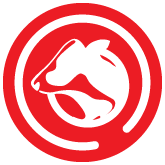
RUMINANTS
FIND THE BEST SOLUTION

Oxidative stress
Oxygen is an essential element for humans, most animals and plants. It participates in the respiration process with, among other things, oxidoreductases, which can convert oxygen to reactive radicals. Free radicals formed in the body are mainly reactive oxygen (ROS) and nitrogen species (RNS), but also free radical metabolites of toxic chemicals. Free radicals are atoms or groups of atoms with unpaired electrons striving to make up for a missing electron – hence their unusual reactivity.
The production of free radicals is also a form of response to pathogen attacks and a primary form of fighting infection and repairing damaged tissues. Their production to a certain extent is a normal physiological response, while their excess destroys the body. As a result of disorders in the mechanisms regulating the production of free radicals (diseases, environmental pollution, stress), there is an excessive accumulation of them, which is referred to as oxidative stress. Nutritional factors such as unbalanced diets, poor-quality feed fat, high levels of polyunsaturated fatty acids, feed contaminated with pesticides or mycotoxins, heavy metals, and a deficiency of natural antioxidants (vitamin E and C) may also be a cause of the phenomenon described.
Research findings suggest that oxidative stress may also be a consequence of the disease process. Overproduction of reactive oxygen species and/or a deficit of natural antioxidants is associated with the course of many diseases. Activation of the immune system results in the production of reactive oxygen species, which increases the consumption of natural antioxidants and leads to their deficiency in the tissues. In addition, feed intake decreases during infection. The use of increased levels of certain biologically active compounds in diets during periods of immune stress or convalescence may therefore be justified.
Heat stress affects reduced feed intake, productivity, and reproduction problems. The negative effect of heat stress on milk yield is particularly pronounced in the most productive cows, which have an increased rate of metabolism due to their high milk yield. Heat stress also promotes oxidative stress, i.e. accumulation of free radicals in the cow’s body, resulting in reduced immunity. In turn, the consequences of reduced immunity can be retained placenta, endometritis, and mastitis, i.e. an increased number of (SCC) somatic cells in the milk.
In animals, a specific physiological state that promotes an increased production of free radicals is pregnancy and the subsequent perinatal period. During pregnancy, several physiological and anatomical changes take place in the cow body, such as intensive differentiation of the secretory epithelium or growth of the mammary gland, which promotes the generation of reactive oxygen species and causes oxidative stress.
Metabolic abnormalities during the periparturient period in dairy cows are characterised by excessive lipid mobilisation, inflammation and oxidative stress combined with a reduction in immunity. Abnormalities in cellular metabolism promote the occurrence of various diseases in dairy cows, including: retained placenta, udder edema, mastitis, delayed first heat, and early embryo mortality.
Several studies have confirmed the significant impact of antioxidant potential on meat quality. Increasing the supplementation of specific vitamins (such as E, C, D3, and niacin) in fattening rations not only has a positive effect on production performance but can also influence the production of high-quality beef. Furthermore, it has been demonstrated that antioxidant plant extracts contribute positively to meat quality, with the combination of polyphenols and vitamin E proving more effective than vitamin E alone in stabilizing meat fat.
One crucial component of this system is antioxidants, and the consequence of their deficiency is oxidative stress. Antioxidants belong to the chemical compounds produced in secondary metabolism reactions and are a defence response to certain stimuli, such as mechanical injury, light, infectious agents and pests. The function of antioxidants in the body is to neutralise active radicals. A number of compounds show antioxidant activity. These include polyphenols (caffeic acid, ellagic acid, ferulic acid and flavonoids and stilbenes), carotenoids, (including α and β-carotene, lycopene), ascorbic acid and tocopherols (vitamin E). As a component of the enzyme glutathione peroxidase (GSH-Px), selenium has a synergistic effect with vitamin E and participates as an antioxidant in the protection of cellular and subcellular structures against peroxide damage.
With this information in mind, there has been increasing interest in recent years in the importance of these compounds in cattle nutrition. Many in vitro studies have determined the antioxidant and antibacterial activity of plant extracts and essential oils. In addition to their free radical scavenging function, selenium, vitamin E and polyphenols exhibit extensive biological activities (anti-inflammatory, anticancer, antiviral, antibacterial, hepatoprotective), prevent diseases of the circulatory and digestive systems and even nervous system.

